19.2.7. Das Tabellenelement
You can use table items to decorate and explain your map:
Attribute table: shows a subset of the attributes of a layer, based on predefined rules
Fixed table: inserts a manual text table where information can be independent from the layers.
19.2.7.1. Das Attributtabellenelement
Any layer in the project can have its attributes shown in the print layout.
Use the  Add Attribute Table tool following items
creation instructions to add a new table item that you can
later manipulate the same way as exposed in Interacting with layout items.
Add Attribute Table tool following items
creation instructions to add a new table item that you can
later manipulate the same way as exposed in Interacting with layout items.
By default, a new attribute table item loads first rows of the first (alphabetically sorted) layer, with all the fields. You can however customize the table thanks to its Item Properties panel. Other than the items common properties, this feature has the following functionalities (see Abb. 19.38):
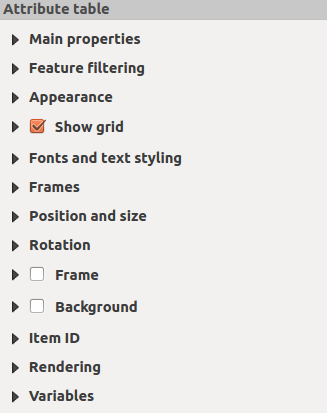
Abb. 19.38 Attribute table Item Properties Panel
Haupteigenschaften
The Main properties group of the attribute table provides the following functionalities (see Abb. 19.39):
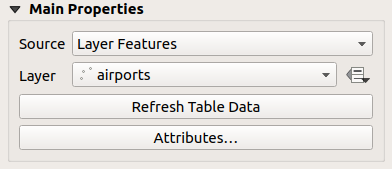
Abb. 19.39 Attribute table Main properties Group
For Source you can by default only select Layer features allowing you to select a Layer from the vector layers loaded in the project.
The
 Data-defined override button near the layer list
allows you to dynamically change the layer which is used to populate the table,
e.g. you could fill the attribute table with different layer attributes per
atlas page.
Note that the table structure used (Abb. 19.42)
is the one of the layer shown in the Layer drop-down list and it is
left intact, meaning that setting a data defined table to a layer with different
field(s) will result in empty column(s) in the table.
Data-defined override button near the layer list
allows you to dynamically change the layer which is used to populate the table,
e.g. you could fill the attribute table with different layer attributes per
atlas page.
Note that the table structure used (Abb. 19.42)
is the one of the layer shown in the Layer drop-down list and it is
left intact, meaning that setting a data defined table to a layer with different
field(s) will result in empty column(s) in the table.In case you activate the
 Generate an atlas option in
the Atlas panel (see Einen Atlas erzeugen), there are
two additional Source possible:
Generate an atlas option in
the Atlas panel (see Einen Atlas erzeugen), there are
two additional Source possible:Current atlas feature (see Abb. 19.40): you won’t see any option to choose the layer, and the table item will only show a row with the attributes from the current feature of the atlas coverage layer.
and Relation children (see Abb. 19.41): an option with the relation names will show up. This feature can only be used if you have defined a relation using your atlas coverage layer as parent, and the table will show the children rows of the atlas coverage layer’s current feature.
The button Refresh Table Data can be used to refresh the table when the actual contents of the table has changed.
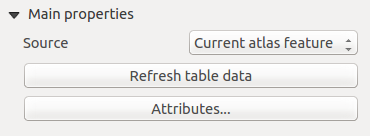
Abb. 19.40 Attribute table Main properties for ‚Current atlas feature‘
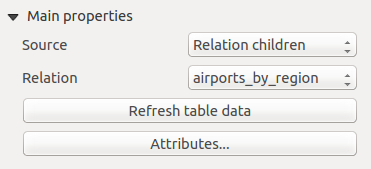
Abb. 19.41 Attribute table Main properties for ‚Relation children‘
The button Attributes… starts the Select Attributes dialog, (see Abb. 19.42) that can be used to change the visible contents of the table. The upper part of the window shows the list of the attributes to display and the lower part helps you sort the data.
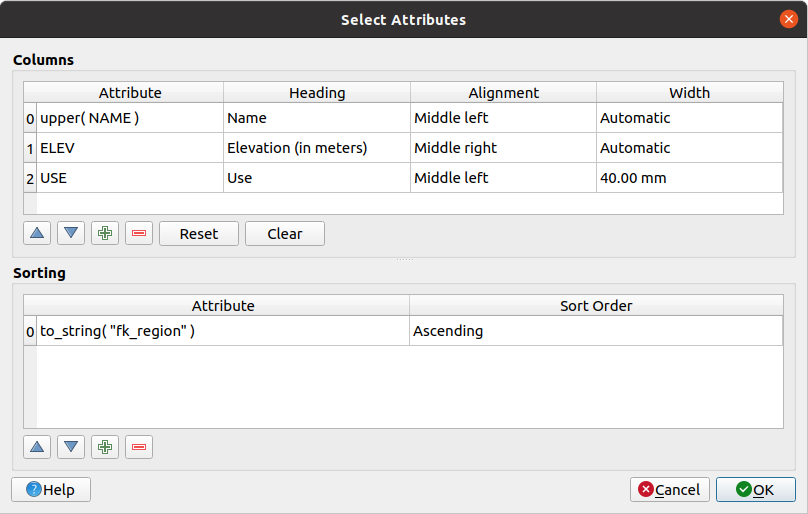
Abb. 19.42 Attribute table Select attributes Dialog
Im Spalten Abschnitt können Sie:
Move attributes up or down the list by selecting the rows and then using the
 and
and  buttons to shift the rows. Multiple rows can
be selected and moved at any one time.
buttons to shift the rows. Multiple rows can
be selected and moved at any one time.Add an attribute with the
 button. This will add an empty row at
the bottom of the table where you can select a field to be the attribute
value or create an attribute via a regular expression.
button. This will add an empty row at
the bottom of the table where you can select a field to be the attribute
value or create an attribute via a regular expression.Remove an attribute with the
 button. Multiple rows can be
selected and removed at any one time.
button. Multiple rows can be
selected and removed at any one time.Reset the attribute table back to its default state with the Reset button.
Clear the table using the Clear button. This is useful when you have a large table but only want to show a small number of attributes. Instead of manually removing each row, it may be quicker to clear the table and add the rows needed.
Cell headings can be altered by adding the custom text in the Heading column.
Cell alignment can be managed with the Alignment column which will dictate the texts position within the table cell.
Cell width can be manually managed by adding custom values to the width column.
Im Sortierung Abschnitt können Sie:
Add an attribute to sort the table with: press the
 button and a new empty
row is added. Insert a field or an expression in the Attribute column and
set the Sort order to Ascending or Descending.
button and a new empty
row is added. Insert a field or an expression in the Attribute column and
set the Sort order to Ascending or Descending.Select a row in the list and use the
 and
and  buttons to
change the sort priority on attribute level. Selecting a cell in the
Sort Order column helps you change the sorting order of the
attribute field.
buttons to
change the sort priority on attribute level. Selecting a cell in the
Sort Order column helps you change the sorting order of the
attribute field.Use the
 button to remove an attribute from the sorting list.
button to remove an attribute from the sorting list.
Objektfiltrierung
The Feature filtering group of the attribute table provides the following functionalities (see Abb. 19.43):
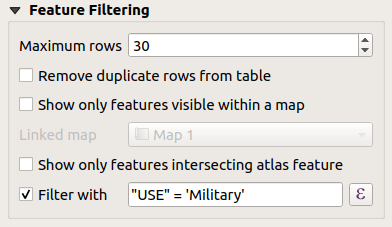
Abb. 19.43 Attribute table Feature filtering Group
Sie können:
Die Maximalen Zeilen , die dargestellt werden sollen, definieren.
 Doppelte Zeilen aus der Tabelle entfernen aktivieren um nur eindeutige Datensätze zu zeigen.
Doppelte Zeilen aus der Tabelle entfernen aktivieren um nur eindeutige Datensätze zu zeigen.Activate
 Show only visible features within a map and select the
corresponding Linked map whose visible features attributes will be displayed.
Show only visible features within a map and select the
corresponding Linked map whose visible features attributes will be displayed.Activate
 Show only features intersecting Atlas feature is only
available when
Show only features intersecting Atlas feature is only
available when  Generate an atlas is activated. When activated it will
show a table with only the features which intersect the current atlas feature.
Generate an atlas is activated. When activated it will
show a table with only the features which intersect the current atlas feature.Aktivieren Sie
 Filtern nach und schaffen Sie einen Filter indem Sie eine Eingabezeile eingeben oder einen regulären Ausdruck über den gegebenen Ausdrucksknopf einfügen. Einige Beispiele von Filteranweisungen, die Sie verwenden können wenn Sie den airports Layer aus dem Beispieldatensatz geladen haben
Filtern nach und schaffen Sie einen Filter indem Sie eine Eingabezeile eingeben oder einen regulären Ausdruck über den gegebenen Ausdrucksknopf einfügen. Einige Beispiele von Filteranweisungen, die Sie verwenden können wenn Sie den airports Layer aus dem Beispieldatensatz geladen habenELEV > 500NAME = 'ANIAK'NAME NOT LIKE 'AN%'regexp_match( attribute( $currentfeature, 'USE' ) , '[i]')
Der letzte reguläre Ausdruck wird nur die Flughäfen einfügen die einen Buchstaben ‚i‘ in der Attributspalte ‚USE‘ haben.
Darstellung
The Appearance group of the attribute table provides the following functionalities (see Abb. 19.44):
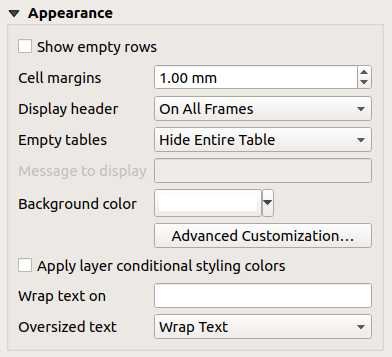
Abb. 19.44 Attribute table appearance Group
Klicken Sie
 Zeige leere Zeilen um die Attributtabelle mit leeren Zellen zu füllen, diese Option kann auch verwendet werden um zusätzliche leere Zellen zu schaffen, wenn Sie ein Ergebnis anzeigen wollen!
Zeige leere Zeilen um die Attributtabelle mit leeren Zellen zu füllen, diese Option kann auch verwendet werden um zusätzliche leere Zellen zu schaffen, wenn Sie ein Ergebnis anzeigen wollen!Mit Zellenränder können Sie die Ränder um den Text in jeder Zelle der Tabelle definieren.
Mit Kopf anzeigen können Sie von einer Liste eine der voreingestellten Optionen ‚Im ersten Rahmen‘, ‚In allen Rahmen‘ oder ‚Kein Kopf‘ auswählen.
Die Option Leere Tabellen kontrolliert was dargestellt wird wenn die Ergebnisauswahl leer ist.
Nur Kopf zeichnen zeichnet nur den Kopf ausser Sie haben ‚Kein Kopf‘ bei Kopf anzeigen ausgewählt.
Ganze Tabelle ausblenden zeichnet nur den Hintergrund der Tabelle. Sie können
 Hintergrund nicht anzeigen wenn Rahmen leer ist in Rahmen aktivieren um die Tabelle komplett auszublenden.
Hintergrund nicht anzeigen wenn Rahmen leer ist in Rahmen aktivieren um die Tabelle komplett auszublenden.Eingestellte Nachricht anzeigen zeichnet den Kopf und fügt eine Zelle ein, die sich über alle Spalten erstreckt und eine Nachricht wie ‚Kein Ergebnis‘ kann in der Option Anzuzeigende Nachricht bereitgestellt werden
Die Option Anzuzeigende Nachricht ist nur aktiviert wenn Sie Eingestellte Nachricht anzeigen bei Leere Tabelle gewählt haben. Die angegebene Nachricht wird in der Tabelle in der ersten Zeile gezeigt wenn das Ergebnis eine leere Tabelle ist.
With Background color you can set the background color of the table using the color selector widget. The Advanced customization option helps you define different background colors for each cell (see Abb. 19.45)
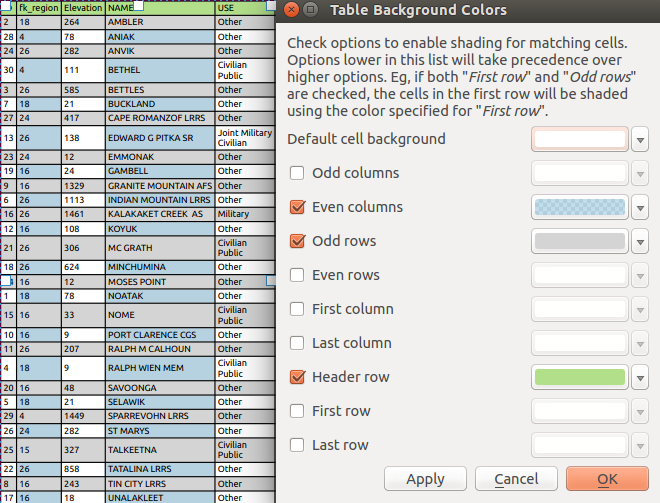
Abb. 19.45 Attribute table Advanced Background Dialog
 Apply layer conditional styling colors:
the conditional table formatting present
in the layer is applied inside the layout attribute table (only background
and foreground colors are currently supported). Conditional formatting rules
take precedence over other layout table formatting settings,
e.g. they will override other cell background color settings such as
alternating row colors.
Apply layer conditional styling colors:
the conditional table formatting present
in the layer is applied inside the layout attribute table (only background
and foreground colors are currently supported). Conditional formatting rules
take precedence over other layout table formatting settings,
e.g. they will override other cell background color settings such as
alternating row colors.Mit der :gui-Label:`Wrap Text on` Option können Sie ein Zeichen definieren, auf dem der Zellinhalt wird eingewickelt wird, jedes Mal, wenn er erfüllt ist
With Oversized text you define the behavior when the width set for a column is smaller than its content’s length. It can be Wrap text or Truncate text.
Bemerkung
More properties of the attribute table item are described in the Tables common functionalities section.
19.2.7.2. Das Feste Tabellenelement
Additional information about the map can be inserted manually into a table by
choosing  Add Fixed Table and by following items
creation instructions to add a new table item that you can
later manipulate the same way as exposed in Interacting with layout items.
Add Fixed Table and by following items
creation instructions to add a new table item that you can
later manipulate the same way as exposed in Interacting with layout items.
By default, an empty table with two minimized columns and rows appears in the map layout. You have to customize the table in the Item Properties panel. Other than the items common properties, this feature has the following functionalities:
Haupteigenschaften
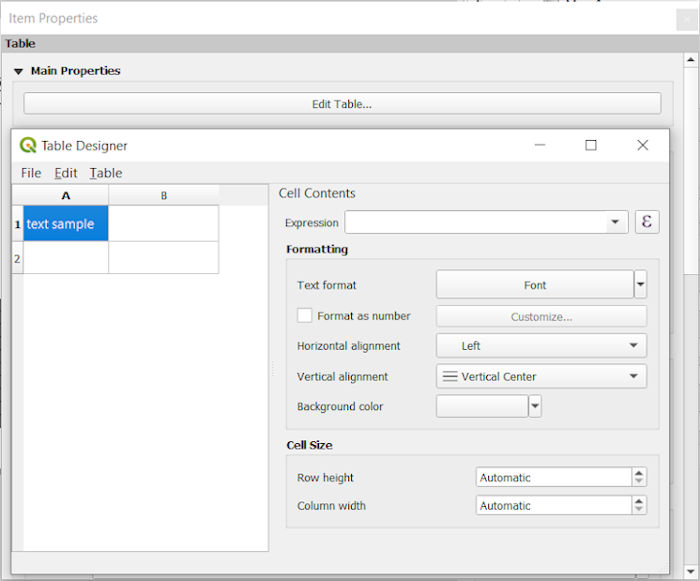
Abb. 19.46 Fixed table Item Properties Panel with Table designer
In Main properties you can work with the Table designer when clicking the Edit table …:
You can click into the table and insert texts manually.
Through the menus on top it is possible to:
You can work with the Cell Contents section on the right and:
Define the text format of selected cells in Formatting
Define the Cell Size with Row height and Column width.
Darstellung
The Appearance group of the fixed table provides the following functionalities:
Click
 Show empty rows to fill the attribute table with empty cells.
Show empty rows to fill the attribute table with empty cells.Mit Zellenränder können Sie die Ränder um den Text in jeder Zelle der Tabelle definieren.
Mit Kopf anzeigen können Sie von einer Liste eine der voreingestellten Optionen ‚Im ersten Rahmen‘, ‚In allen Rahmen‘ oder ‚Kein Kopf‘ auswählen.
With Background color you can set the background color of the table using the color selector widget. The Advanced customization option helps you define different background colors for each cell.
With Oversized text you define the behavior when the width set for a column is smaller than its content’s length. It can be Wrap text or Truncate text.
Bemerkung
More properties of the fixed table item are described in the Tables common functionalities section.
19.2.7.3. Tables common functionalities
Gitter anzeigen
The Show grid group of the table items provides the following functionalities (see Abb. 19.47):
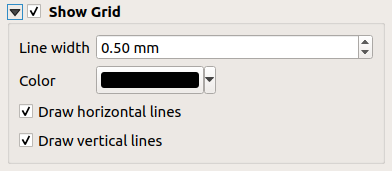
Abb. 19.47 Attribute table Show grid Group
Activate
 Show grid when you want to display the grid,
the outlines of the table cells. You can also select to either Draw
horizontal lines or Draw vertical lines or both.
Show grid when you want to display the grid,
the outlines of the table cells. You can also select to either Draw
horizontal lines or Draw vertical lines or both.Mit Strichbreite können Sie die Dicke der Linien, die im Gitter verwendet werden, festlegen.
The Color of the grid can be set using the color selection widget.
Schrift- und Textgestaltung
The Fonts and text styling group of the table items provides the following functionalities (see Abb. 19.48):

Abb. 19.48 Attribute table Fonts and text styling Group
You can define Font properties for Table heading and Table contents, using the advanced text settings widget (with buffer, shadow, paint effects, transparence, background, coloring, …). Note that these changes do not affect the cells that have custom font assigned, either from the Appearance section or the Table Designer dialog. Only cells with the default rendering are overwritten.
For Table heading you can additionally set the Alignment to
Follow column alignmentor override this setting by choosingLeft,CenterorRight. The column alignment is set using the Select Attributes dialog (see Abb. 19.42 ).
Rahmen
The Frames group of the table item properties provides the following functionalities (see Abb. 19.49):
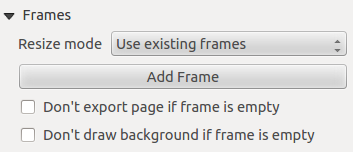
Abb. 19.49 Attribute table Frames Group
Mit dem Größenmodus können Sie auswählen wie der Inhalt der Attributtabelle gerendert wird:
Use existing framesdisplays the result in the first frame and added frames only.Extend to next pagewill create as many frames (and corresponding pages) as necessary to display the full selection of attribute table. Each frame can be moved around on the layout. If you resize a frame, the resulting table will be divided up between the other frames. The last frame will be trimmed to fit the table.Repeat until finishedwill also create as many frames as the Extend to next page option, except all frames will have the same size.
Use the Add Frame button to add another frame with the same size as selected frame. The result of the table that will not fit in the first frame will continue in the next frame when you use the Resize mode
Use existing frames.Activate
 Don’t export page if frame is empty prevents
the page to be exported when the table frame has no contents. This means all
other layout items, maps, scalebars, legends etc. will not be visible in the result.
Don’t export page if frame is empty prevents
the page to be exported when the table frame has no contents. This means all
other layout items, maps, scalebars, legends etc. will not be visible in the result.Das Aktivieren von
 Hintergrund nicht anzeigen wenn Rahmen leer ist verhindert dass der Hintergrund gezeichnet wird wenn der Rahmen keinen Inhalt hat.
Hintergrund nicht anzeigen wenn Rahmen leer ist verhindert dass der Hintergrund gezeichnet wird wenn der Rahmen keinen Inhalt hat.